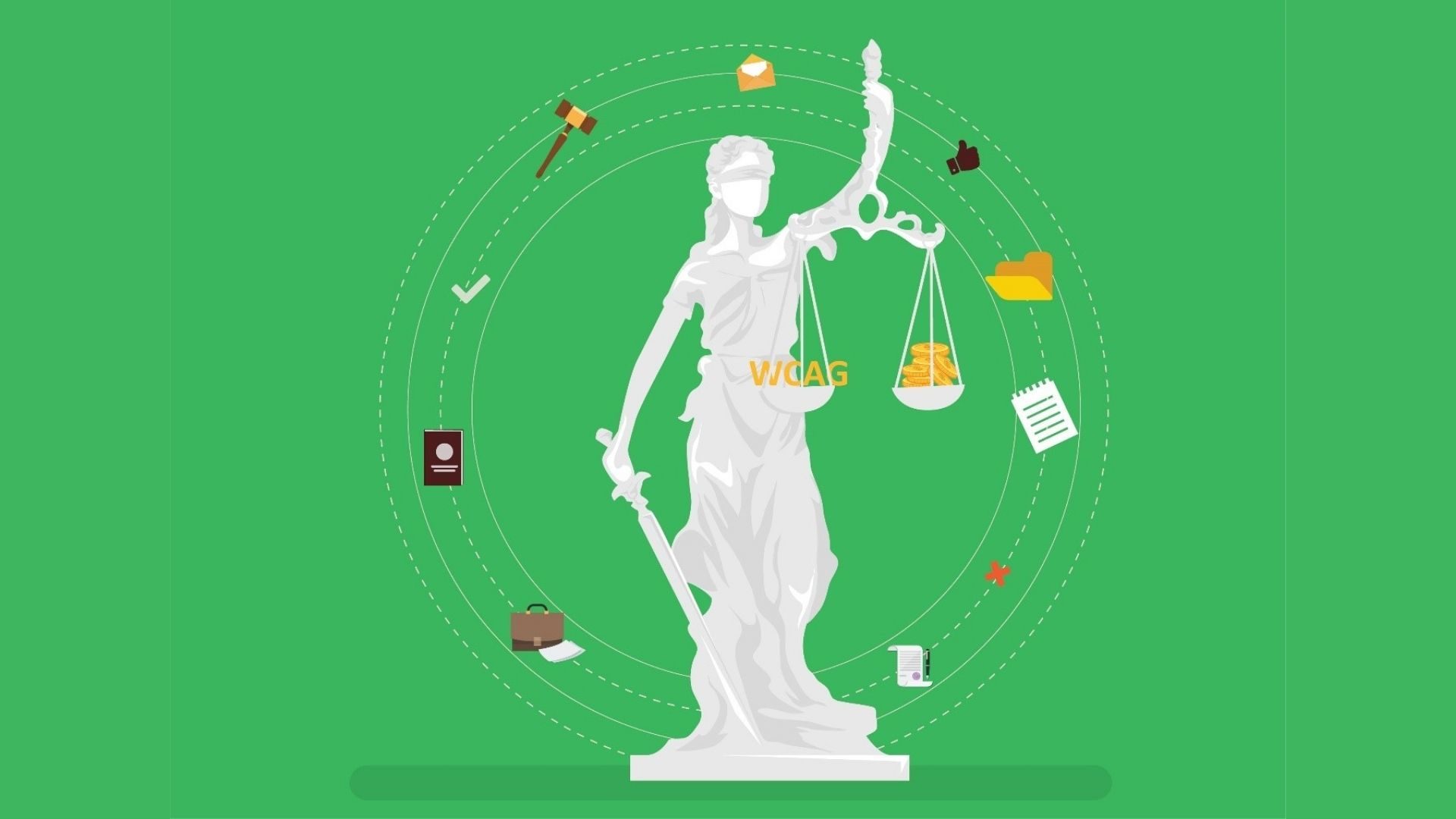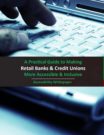Accessibility should be at the forefront of efforts at banks and other financial institutions in 2021 and beyond. Having an ADA/508 compliant bank or credit union website and digital documents are more important than ever as more and more customers have embraced online banking in recent times.

However, when banks and financial institutions transform their digital assets to improve customer experience, they often forget one very important thing: accessibility. Failing to ensure access to websites, apps, and online documents such as forms and PDFs for people with disabilities will likely result in litigation and necessitate a much needed but expensive transformation.
One of the important federal laws that govern accessibility requirements is the Americans with Disabilities Act (ADA). This year marks the 30th anniversary of the ADA, a law that paved the way for banks and other institutions to recognize the needs of their customers with disabilities and finding ways to accommodate them.
The Americans with Disabilities Act (ADA) in a nutshell:

- Prohibits discrimination on the basis of disability at the workplace including recruitment, hiring, pay, and other related aspects.
According to the US Bureau of Labor Statistics, only 19.3 percent of persons with a disability were employed in 2019.

- Prohibits discrimination on the basis of disability in state and local government services.

- Prohibits discrimination against individuals with disabilities that prevents them from having equal access to public accommodations.

- Ensures telephone and internet companies provide services that enable individuals with hearing and speech disabilities to communicate via phone.
Digital Accessibility and Banking
Accessibility is a prerequisite for banking services, and banks have to realize that making digital documents and web content accessible would not only increase their customer base but also provide the customer with information that’s much easier to consume and understand. To create a fully accessible website, banks should follow the guidelines set by the Worldwide Web Consortium (W3C) called the Web Content Accessibility Guidelines (WCAG) 2.1 standard that provides businesses and developers with a set of processes and guidelines to ensure simple and intuitive access for individuals with disabilities.
The W3C is working on a draft of WCAG version 2.2 with several new success criteria focused on extending requirements for users with low vision, cognitive impairments, and limited fine motor skills.

The Price of Non-Compliance
Litigation around web accessibility for banking and insurance companies has a long history dating back to 2000 with lawsuits against Bank of America, Intuit, H&R Block, and many more. ADA compliance is a very serious matter, one which left unaddressed could expose banks and financial institutions to litigation and negative publicity.
Here’s a look at some of the accessibility lawsuits filed against banks and financial companies in the recent past:
- The most recent accessibility lawsuit was filed on August 14, 2020, by Shael Cruz against Key Bank, a financial institution offering personal and commercial banking and lending services.
- An ADA lawsuit was filed on April 7, 2020, by Luis Licea, a blind man in the California State Court, against American Express alleging that its website was not accessible as per WCAG 2.0 accessibility standards.
- On January 23, 2019, Andres Gomez, a blind man filed a complaint in the Florida Federal Court against First American Bank, alleging that the website was not accessible with screen reader software. The bank agreed to make its website fully compliant with WCAG 2.0 guidelines.
- In 2016, Jessie Lorenz, a mortgage holder with vision impairment filed a case against Bank of America alleging that the mortgage-related documents of the multinational bank did not comply with WCAG 2.0 Level AA guidelines.
- The United States Department of Justice (DOJ) filed a complaint in 2014 to intervene in a lawsuit between the National Federation of the Blind and tax preparation company, H&R Block. The company agreed to make its website, downloadable software related to tax filing, and all resources, files, images, graphics, text, audio, video, and multimedia accessible for all users as per WCAG 2.0 guidelines.
- The DOJ in 2011 launched an investigation against Wells Fargo after several of its deaf, hard of hearing, and speech-impaired customers filed numerous ADA complaints against the bank. Wells Fargo agreed to pay up to 17 million dollars to the affected customers. In addition, the bank also undertook several measures to improve the accessibility of its customers, including revising its website to be ADA 508 compliant and making a copy of its ADA policy available online, setting a precedent for web accessibility.
- Equifax, Experian, TransUnion, and Central Source reached a structured negotiation with the American Council of the Blind, California Council of the Blind, and three individual plaintiffs to make their websites accessible as per WCAG 2.0 guidelines.
Challenges in Banking
Banks have traditionally relied on and utilized hundreds of documents and forms to run their business. While many of these documents and forms are web-based today, many institutions continue to provide these documents as print copies or PDF as well. Based on the compliance mandate and regulations, all digital documents need to be made accessible for people with disabilities through assistive technology. Therefore, it is incumbent upon financial institutions to ensure that individuals with disabilities can access those documents. The DOJ has created a guide to help meet the disabled community’s communication requirements. Also, these services must be provided free of charge by the organization using these documents, not the consumer.
Making Digital Documents Accessible
The core steps needed for accessibility are the same regardless of whether the document is in HTML, Microsoft Word, Adobe PDF, or any other format for that matter. Some of the actions that can help banks improve their compliance with accessibility laws and standards:
- Provide text alternatives for any non-text content
- Ensure all images have alternative text
- Label all the form fields
- Test website using only a keyboard
- Check content structure
- Give users enough time to read & use content
- Make the content more distinguishable, both visually and via audio
- Make the website easily navigable
- Help users avoid and correct mistakes
- Make all functionalities accessible from a keyboard
- Manually audit and remediate your website as per WCAG 2.0 AA or 2.1 AA
Avoiding Legal Pitfalls
Here are some of the ways banks and financial institutions can avoid legal pitfalls in their accessibility journey:
- Make an inventory of all public-facing websites
- Identify and prioritize key web pages which attract high traffic
- Contact a digital accessibility consultant
- Adopt policies and internal procedures that are compliant with WCAG guidelines
- Train employees to adopt accessibility into their roles – web development, content, IT, marketing, customer service, etc.
- Include accessibility assurances in vendor contracts
- Thoroughly investigate third-party content
Advantages of Accessibility
- Increase customer engagement
- Improve user experience
- Boost brand image
- Limit legal risks
Conclusion

The CDC reports that approximately 61 million people or a quarter of the adult American population live with some form of disability, and their collective annual disposable income is an estimated $645 billion. Banks and financial institutions have to anticipate the needs of their disabled customers and make their websites and apps accessible to everyone regardless of their ability to prevent customer churn, minimize litigation, avoid bad PR, and serve their clients better. According to a study by the international legal firm, Seyfarth Shaw, in 2019, out of 2,235 ADA accessibility lawsuits filed that year, 2% of those were against banking and financial institutions. And the only way to avoid these costly and time-consuming lawsuits and earn the trust of this oft-neglected segment of the population is by becoming accessible.
- Charting Your Accessibility Journey in the State of Illinois - December 6, 2021
- Demystifying Document Accessibility: 10 Tips to Help Get you Started - November 3, 2021
- Looking Back at Digital Accessibility and Its Significance Today: Timeline of Consequential Events - October 21, 2021


